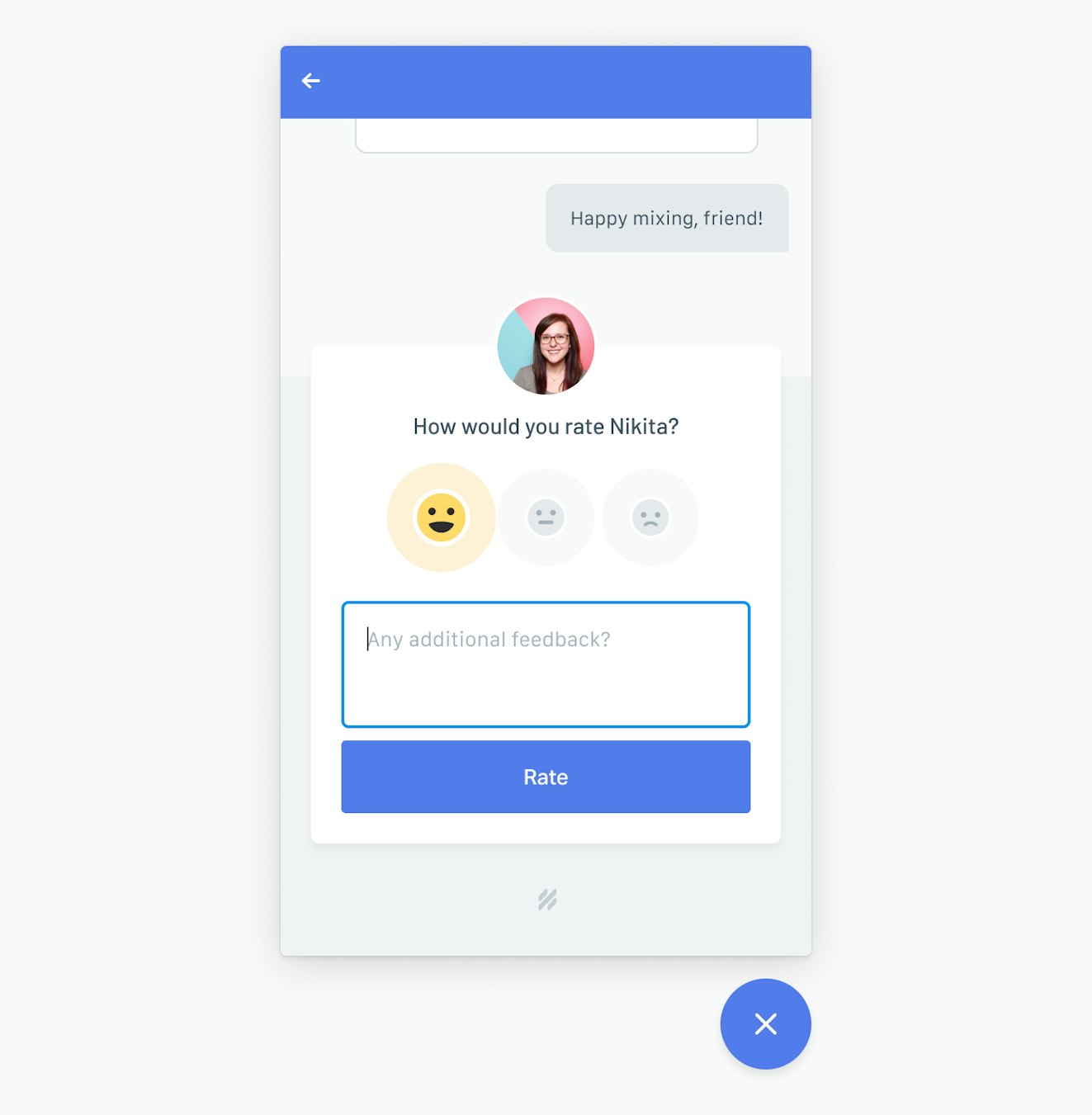If there’s one truth I’ve learned in over a decade of leading support teams, it’s this: Feedback is fuel.
Most support leaders collect feedback religiously. They track CSAT scores, read survey comments, and present the data in monthly reports.
But collecting feedback is the easy part. The hard part — and the part that actually moves the needle — is knowing which feedback to act on and doing something about it quickly enough to matter.
The difference between teams that simply collect feedback and those that use feedback well comes down to three things: asking the right questions at the right time, distinguishing signal from noise, and building systems that turn insights into action before customers move on.
In this guide, I’ll show you how to collect meaningful customer service feedback across multiple channels, how to avoid the common traps that lead to survey fatigue and low response rates, and, most importantly, how to turn that feedback into tangible improvements.
Whether you’re leading a support team at a SaaS company, managing ops at a startup, or trying to raise the customer service bar for your small business, you’ll walk away with strategies that are grounded in what actually works — not just what sounds good in theory.
Why collecting customer service feedback matters
Customer service feedback does three things that no other data source in your company can do as effectively:
It tells you what’s broken before your metrics do. Volume spikes and resolution times are lagging indicators. They tell you something went wrong last week. But feedback is a leading indicator. When customers start saying, “I had to contact you three times about this” or “Your team didn’t seem to understand my issue,” you’re seeing friction in real time, often days or weeks before it shows up as churn or a viral complaint on social media.
It gives you leverage in cross-functional conversations. Support teams often know exactly what’s frustrating customers, but they can struggle to get product, sales, or marketing to prioritize fixes. Feedback data changes that dynamic. When I walk into a meeting with our product team and say, “Here are 47 comments from the past month about confusion during onboarding, and here’s the specific step where people get stuck,” I’m delivering actionable feedback that can help build a better product.
It shows your team their impact. Support can feel like an endless cycle of putting out fires. But when you share customer comments like, “Sarah was incredibly patient and helped me understand exactly what was happening” or show the team that response time improvements led to a 15-point jump in CSAT, you’re proving their work matters. That recognition fuels better performance and reduces burnout.
At Cars Commerce, we’ve used feedback to identify training gaps, influence product decisions, and catch brewing problems before they became full-blown crises.
But none of that happens if you’re just collecting scores and letting them sit in a dashboard. The value comes from building systems that turn feedback into decisions quickly enough to matter.
8 effective ways to collect customer service feedback
Before you can act on feedback, you need to ensure you’re gathering it consistently, accessibly, and in a customer-friendly way. Here are eight methods that have worked well for my teams and the lessons I’ve learned along the way.
1. CSAT surveys embedded in the case experience
Let’s start with the classic: Customer Satisfaction (CSAT) surveys.
We trigger a CSAT survey the moment a case is marked solved in our CRM. It’s embedded directly in the email and only asks one question: “Were we able to help you?” Customers respond by selecting Yes, Kind of, or No, with the latter two responses triggering an optional comment designed to dig deeper. It’s quick, low-friction, and highly effective.
Lesson learned
Context is everything, so don’t just look at CSAT scores in a vacuum. By pairing CSAT responses with case metadata in our CRM (like agent name, issue type, product line, or time to resolution), we’ve been able to spot patterns we would’ve otherwise missed.
For example, a recurring dip in CSAT prompted us to create a training focused on communicating with customers about our inventory feeds (a key piece of the service we provide our customers). We’d realized that our support team could solve inventory issues well enough, but they had trouble effectively articulating what the issue was to customers. The richer the context, the more actionable the feedback becomes.
2. Real-time feedback in chat or messaging channels
If your team uses live chat or messaging, that’s another excellent opportunity to gather feedback in the moment. With tools like Help Scout’s Beacon, you can prompt an emoji-style rating at the end of the conversation. These quick, low-friction surveys help capture how the customer felt about the interaction while it’s still fresh, without interrupting their flow or requiring a separate follow-up.

Lesson learned
Trying to maximize survey responses without considering how often customers are contacted can lead to survey fatigue and lower engagement. If you’re asking for feedback after every chat, keep it simple. A quick rating on the current interaction captures fresh insights without overwhelming customers with repetitive or overly broad questions.
3. Proactive outreach for high-value accounts
Sometimes the best feedback comes from simply asking. For your VIP or more vocal customers, it’s often worth reaching out one-on-one.
At Cars Commerce, we’ve had success setting up brief feedback calls between support leadership and high-value clients. They typically take about 15 minutes and simply ask, “How has your support experience been lately? Anything we can do better?” It opens up deeper conversations, builds rapport, and often uncovers process or communication gaps that surveys miss.
Lesson learned
These conversations don’t take long, but they should be treated like gold. Capture notes in your CRM or knowledge base so themes can be tracked over time.
4. Use customer service feedback software
You may want to invest in customer service feedback software to scale your feedback gathering. While most customer service software options include functionality like CSAT and NPS surveys, dedicated survey tools pack in more functionality.
Here are three features that are often good to look for:
Native CRM integration so feedback ties directly to case data.
Conditional logic to trigger different follow-ups based on scores.
Segmentation by a few custom fields (e.g., agent, product line, issue type, customer tier, channel).
We currently use GetFeedback, which integrates directly with our CRM. It allows us to automate survey delivery, track response rates, and, most importantly, tie survey results to follow-up actions.
If someone leaves a neutral or negative CSAT, it automatically triggers a task for a supervisor to review and follow up. This kind of automation ensures that no piece of feedback falls through the cracks while minimizing the effort required to look for information.
Lesson learned
Choose customer service feedback software that lets you slice feedback by segment, channel, or rep. It’ll make acting on it a whole lot easier. Tools also allow you to automate and simplify the feedback process, so it’s a worthwhile investment.
5. Internal team feedback loops
Sometimes the best signal comes from your own team.
We encourage agents and supervisors to flag customer pain points they hear repeatedly, especially when they don’t show up in survey comments. Whether it’s a confusing product workflow or unclear communication from another department, this internal feedback is just as valuable.
You can collect it via Slack channels, weekly stand-ups, or a shared doc — whatever fits your team’s workflow. In addition to a virtual “open door policy” for feedback, we also send out Google forms quarterly asking for feedback from the team as well.
Lesson learned
Creating a culture where internal feedback is encouraged (and acted on) reinforces that everyone has a role in improving the customer experience.
6. Analyzing trends in support interactions
Not all feedback is explicit. Sometimes, it’s hiding in plain sight in your tickets, chats, and call logs.
At Cars Commerce, my leadership team and I regularly review trends across our support channels, and it’s a great way to find that “unspoken” feedback that may not show up in surveys. Here are some things we ask as we review:
What specific issues are driving the most contacts?
Are there tags or case reasons that keep popping up?
What specific product feature is causing confusion for both new and longtime customers?
Are certain customer segments, such as newer customers or high-value accounts, experiencing more friction than others?
Do spikes in volume align with a recent product update, feature launch, or marketing campaign?
This kind of passive feedback is gold. It can expose knowledge base gaps, training needs, process issues, or even upstream product issues. While it takes more time to analyze, it often leads to some of the most impactful changes.
Lesson learned
Use your support software’s analytics or work with your data or ops team to build recurring dashboards. Even a basic report showing “Top 10 contact reasons” can provide insight you’d never get from a CSAT comment alone. Making it easy to collect and analyze the data will allow you to take action more quickly as well.
7. Get feedback directly on your help docs/knowledge base
Your help center might not get as much attention as your inbox or chat queue, but it’s often the first stop for customers trying to solve their own problems. That makes it one of the most valuable places to collect feedback.
Tools like Docs allow you to embed simple “Was this article helpful?” prompts at the bottom of each article, which gives customers an easy way to signal whether the content helped or not. Some tools also allow for optional comments, which can quickly point you to confusing instructions, outdated screenshots, or missing steps.

We’ve found that the real power here comes from looking at the patterns. Are low ratings focused on a specific product area? Are outdated articles surfacing repeatedly in searches? When you track article feedback alongside metadata like article version, last update date, or product category, it becomes much easier to prioritize updates that will reduce support volume and improve the self-service experience.
Just like with CSAT, the key isn’t just collecting the feedback; it’s acting on it consistently.
Lesson learned
Don’t treat help doc feedback as a passive signal. Build a regular cadence for reviewing low-rated articles, tie it to ownership within your team, and communicate updates when feedback drives change. Small acknowledgments go a long way toward building trust with customers, and they make your help docs stronger over time.
8. Leverage your quality assurance program as feedback
CSAT and surveys are outward signals. Quality assurance reviews are your inward magnifiers, letting you see what should have happened versus what did happen in support interactions and where your team is missing opportunities to improve.
In practice, my team and I use a QA rubric aligned to our support standards. We randomly sample tickets, phone calls, chats, or email interactions, score them against criteria such as tone, completeness, clarity, and empathy, and then surface the ones that fall short. When a ticket scores low, we dig into what went wrong. Was it knowledge, language, lack of follow-up, or lack of documentation?
Because QA is systematic and repeatable, it surfaces patterns over time. You’ll start to see which team members need coaching in certain areas, which case types repeatedly suffer from incomplete responses, or where processes aren’t quite setting your agents up for success. It’s a feedback loop built into your daily operations.
Lesson learned
Use QA as a development tool, not as a policing tool. Share anonymized examples with your team, calibrate your rubric regularly, and use scores to spot trends even in positive interactions. Over time, QA becomes a continual feedback engine that strengthens your baseline service quality.
Best practices for collecting customer service feedback
Collecting feedback isn’t just about setting up a survey and hoping for the best. It’s about designing a system that works for your customers, your team, and your business goals. Here are the best practices I’ve found most effective as a support leader working across multiple teams and products.
Keep it simple or risk losing responses
If your survey feels like a homework assignment, your response rate will tank.
At Cars Commerce, we saw a 25% lift in engagement when we reduced our CSAT to a single-question format. That one small change gave us more insights than months of multi-question surveys ever did. It helped our customers to respond and gave us enough signal to know where to dig deeper.
Keep it short, clear, and mobile-friendly. Bonus points if the customer can respond directly from an email or chat window without any extra clicks.
Choose the right moment to ask
Timing matters just as much as format.
The best time to ask for feedback is immediately after the interaction, when the experience is fresh. But be careful not to over-ask. If a customer contacts your team three times in a week and gets three survey requests, that’s a great way to make them stop responding altogether.
Set survey frequency rules in your feedback tool (like once every X days per customer) to avoid fatigue and build trust.
Close the loop every time
This is the most important practice: Act on the feedback.
Whether it’s a glowing 10 out of 10 or a frustrated 4, every piece of feedback deserves a follow-up, or, at the very least, internal acknowledgment.
At Cars Commerce, any neutral or negative CSAT triggers a task in our CRM for a supervisor to review. From there, we decide whether to reach out to the customer, coach the agent, or escalate a product concern. That loop builds accountability, and customers notice when you follow through.
Mix quantitative and qualitative feedback
Numbers tell you what’s happening. Comments tell you why.
It’s easy to fall into the trap of tracking CSAT scores as standalone numbers. But if you’re not reading the open-text comments, you’re missing out on context and opportunities to improve.
Make it part of your weekly or monthly team reviews to read feedback together, not just for performance but for learning.
Segment your feedback to spot patterns
Feedback isn’t one-size-fits-all, and neither are your customers.
The experience of a brand-new user trying to get started is wildly different from a seasoned power user troubleshooting a complex issue. That’s why segmentation matters.
Break your feedback down by customer type, product line, contact reason, or support channel — whatever makes the most sense for your business.
The fix for a rocky onboarding might be a better welcome guide, while the fix for advanced-user friction could be a backend performance tweak. You won’t catch those nuances if you’re only looking at feedback in one big pool.
Involve the support team in feedback loops
Support agents aren’t just on the front lines — they’re your feedback translators.
They hear the nuance, catch the patterns, and spot issues before they ever show up in a report. But they’ll only speak up if the culture invites it.
We’ve built internal Slack channels for real-time, “Hey, I’ve seen this three times today” moments, and we make space in one-on-ones and team meetings to review what they’re noticing — not just what the surveys say.
When agents see their insights turn into action, it sparks a flywheel of engagement, ownership, and pride in the experience they’re helping to shape.
How to use the feedback you collect to improve your customer service
Collecting feedback is only half the equation. The real value comes from what you do with it. Here’s the hard truth: If you’re not closing the loop and making changes based on what customers are telling you, they’ll stop telling you anything at all.
Here’s how to use customer feedback to improve service, turning feedback data into real improvements that make a difference for your customers, your agents, and your business.
Categorize and prioritize
Feedback floods in from all directions. To make sense of it, organize it by themes and prioritize it based on impact.
At Cars Commerce, every CSAT survey is tied to a case in our CRM where we have access to what product it was about, the type of issue, the customer segment, and their sentiment. This lets us group feedback into buckets like billing confusion, product bugs, slow response times, etc.
Then we ask:
Is this issue affecting many customers or just one?
Is it a friction point we can fix in support, or do we need to involve another department like product, sales, or onboarding?
How urgent is it?
From there, we decide what gets fast-tracked, what needs a deeper dive, and what’s worth sharing across departments.
Something we keep in mind is that every low score is not a crisis. Some low scores are simply noise. Analyzing feedback is both art and science, and learning to spot the signals that matter most is the artistic part of the process.
Coach your team with real context
Customer feedback is one of the best coaching tools you’ve got, especially when it’s tied to real interactions.
It’s one thing to say, “Be more empathetic.”
It’s another to say, “A customer shared with us that they felt rushed during this interaction. Let’s look at what was said and how we can slow it down and build more trust next time.”
Context provides the all-important why for your team so they understand the reason they need to improve.
We do this regularly in one-on-ones and team huddles, with the mindset that feedback is fuel and not fire. It’s not about calling anyone out. It’s about helping each other level up and deliver the kind of support we’re proud of.
Identify cross-functional opportunities
Some of the most valuable feedback you’ll get doesn’t point to a support issue at all. It points to a product, process, or communication gap elsewhere in the business.
A spike in “Where’s my invoice?” tickets might indicate a billing notification issue; complaints about confusing onboarding might signal a handoff problem from sales. These are opportunities to partner across teams and solve root causes rather than just symptoms.
Every month, I meet with our sales directors to review recurring customer pain points pulled from CSAT comments and support case data. They bring insights from their side like what they’re hearing in client meetings, renewals, and day-to-day conversations. When we put that feedback together, the patterns become clearer.
From there, we collaborate on prioritizing fixes that reduce ticket volume, ease friction for the sales team, and create a better experience for our customers across the board.
Share feedback wins across the org
When feedback leads to change, make it known.
Support teams thrive on knowing their work makes a difference, especially when that impact is seen beyond the queue. Recognition fuels momentum. Here are a few ways to celebrate those wins:
If your team gets a shout-out from a happy customer, share it in your next all-hands. Let the rest of the company feel that win, too.
If a support-driven insight leads to a product improvement, make sure the team knows their voice influenced the roadmap.
If you implement a new process based on an agent’s idea, spotlight them publicly. Recognition builds ownership and culture.
These moments reinforce that feedback isn’t just a checkbox, it’s a strategic asset. When people see it driving real change, they’ll lean in even more.
Don’t just fix the problem, tell people you fixed it
Collecting and acting on feedback is essential, but closing the loop is where trust is built. One of the most powerful things you can say to a customer is, “We heard you, and we made a change because of you.”
That kind of transparency shows customers that their voices matter. It turns passive users into engaged advocates.
This doesn’t have to be a big production. A quick follow-up email, a release note mention, a callout in your newsletter, or a small in-app message can do the trick. If the feedback came from a specific customer, even a personal thank-you note may go a long way.
The key is visibility. Let people see the connection between what they shared and what you did. That simple action can deepen loyalty, boost credibility, and make customers more likely to speak up in the future.
When feedback leads to real change and you share that change, it transforms feedback from a checkbox into a relationship builder.
Recognize when feedback isn’t actionable
Not all feedback deserves action, and learning to recognize the difference is one of the most valuable skills a support leader can develop.
Here’s what I’ve learned:
Some low CSAT scores are genuine signals that something’s broken. Others are noise, like frustration with a situation you can’t control, unrealistic expectations, or someone having a bad day. If you treat everything as equally urgent, you’ll exhaust your team chasing ghosts while missing the patterns that actually matter.
The best tip here is to look for patterns rather than individual data points. Suppose you get five complaints about the same issue (even if you initially dismissed it as an unrealistic expectation). In that case, that’s a signal that you might be overpromising or leaning too heavily into a feature in your marketing that isn’t meeting expectations.
Combine feedback with action for success
Customer service feedback isn’t just a metric: It’s a mirror and a roadmap combined. It shows you what’s working, what’s broken, and where your customers need more from you.
The catch is this: It only matters if you act on it.
The best support teams I’ve worked with are obsessed with listening, learning, and constantly improving. It’s not something to fear but something to use.
If you’ve been collecting CSAT or customer comments, start building the habit of turning feedback into action. When your team listens well and acts fast, your customers notice — and they stick around.












